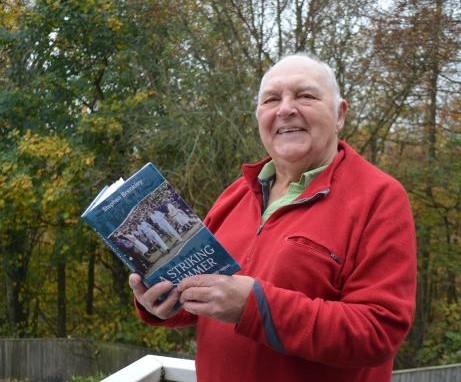If cricket writer and author Stephen Brenkley was to have a crack at Mastermind, his chosen specialist subject would undoubtedly be the summer of 1926.
“For the past 18 months I have lived in 1926. It has dominated my life,” he says.
The result is his latest book A Striking Summer: How cricket united a divided nation. It recalls how the England cricket team regained the Ashes against the visiting Aussies after a gap of 14 years.
But this is much more than a cricket book. The cricket is set against a background of social upheaval in the country.
Stephen, who spent two decades following England’s fortunes as cricket correspondent of the Independent and Independent on Sunday, explains: “It was the year of the general strike and it was quite clear the country was in one of its more turbulent times.
“Things hadn’t settled down after the First World War. People were incredibly upset about the deal they were given.
“There was huge inequality; deference to the upper classes was mandatory.
“At the time, cricket was the national sport and cricket may have staved off revolution and brought the classes together.
“It is quite clear that this series captivated the nation – people were given something else to think about.”
In addition to the nine-day general strike, industrial unrest was rife among the miners, railway workers and dockers.
Horse racing had stopped but cricket continued throughout, even though it meant the visiting Australians hiring taxis because they couldn’t get about by train.
In fact, the greatest threat to the Ashes series was the weather.
The wet summer notwithstanding, those who got to see the action when play did get under way saw some of the greatest names ever to play the game – the likes of Jack Hobbs and Herbert Sutcliffe for England and the Aussies’ Charlie McCartney.
The 1926 Ashes series also saw the debut of fast bowler Harold Larwood, who would go on to play such a central part in the bodyline series down under a few years later. “The country was at fever pitch at the start of the series,” says Stephen.
“However, the series was hampered by bad weather and games were played over just three days.
“The country was desperate for England to do well, but it was 0-0 going into the final test at the Oval.
“It was decided the game would be played to a finish however long it took. When it came to it, England won in four days. When they won, shop windows all over the country carried the score.
“Prime Minister Stanley Baldwin, who was a huge cricket fan, was trying to bring an end to the different strikes and lock outs but still went and met the teams.”
He adds: “It’s a great story. Just for that moment it shows what a powerful opiate sport was for people and how it brings people together.
“There was a sense of relief in the country that suggested everything was going to be alright.
“The series had some great cricket, some great performances and the last match was a classic.”
Stephen, who is president of Barnard Castle Cricket Club, describes A Striking Summer as a book not just about cricket but about the sport’s place in society.
“It’s a book about what was going on in society and how cricket somehow helped to make things better.”
l A Striking Summer: How cricket united a divided nation is published by Fairfield Book and is available from all good bookshops and online outlets.






